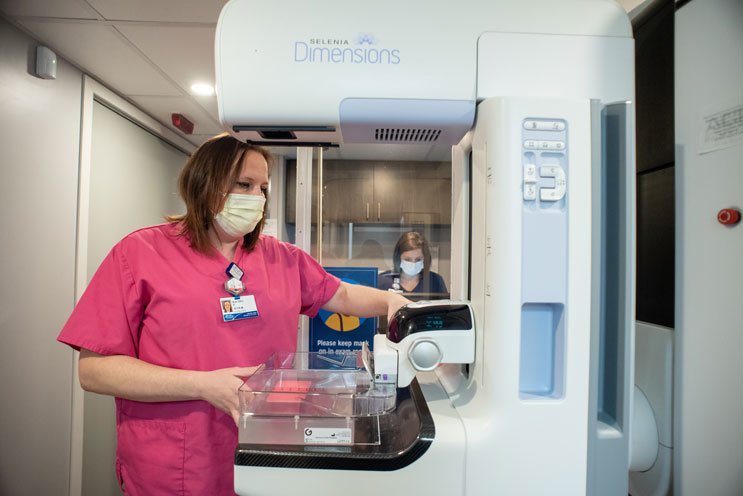Schedule Your Mammogram Online
It's quick and convenient to make your appointment online at any of our locations, where we are committed to keep you safe during your visit!
Henry Ford offers advanced 3D mammography (also called digital breast tomosynthesis) for breast cancer screenings. With this advanced screening mammography technology, we’re able to create a 3D picture of the breast, making it more easily to detect cancer at its earliest stage, when it’s most treatable. 3D mammography is especially beneficial for women with dense breasts because the 3D image allows doctors to more easily see through dense breast tissue.
A traditional mammogram takes two X-ray images of the breast: one image from the top to bottom and one image from side to side. 3D mammography is different because it takes multiple X-ray images of the breast from multiple angles. These images create the 3D picture of the breast, and your radiologist will be able to see tiny details of the breast tissue like never before. This 3D mammogram gives fewer false-positives and fewer call backs and may catch more tumors.
It's quick and convenient to make your appointment online at any of our locations, where we are committed to keep you safe during your visit!

3D mammography is used for both screening and diagnostic purposes. Those undergoing screening mammography who may benefit greatest are:
Women should talk with their physicians at their next regularly scheduled appointment to determine if 3D mammography is appropriate for future breast cancer screenings.
Those who receive traditional digital mammography are still receiving one of the most advanced and well-proven technologies to assist in the early detection of breast cancer. In fact, screening mammograms used for further detection of breast abnormalities are still conducted using traditional digital mammography in most cases.
Approximately 45% of women undergoing screening mammography are classified as having either "heterogeneously dense" or "extremely dense" breasts. Fewer than 10% of all women have "extremely dense" breast tissue, which is associated with a relative risk of breast cancer of approximately 2 compared with average breast density. 40% of women have "heterogeneously dense" breast tissue, which is associated with a relative risk of approximately 1.2. Therefore, breast density is not a major cancer risk factor.
Breasts are considered dense if there is a lot of fibrous or glandular tissue but not much fatty tissue. Dense breasts can make it difficult to detect cancer. In a traditional mammogram, cancer can ‘hide’ or be obscured within the dense tissue. With a 3D mammogram, breast tissue can be examined layer by layer, making it easier to detect cancer in its earliest stage.
3D mammography is offered at these Henry Ford locations:
We use cookies to improve your website experience. By using this site, you agree to our Terms of Use. Read our Internet Privacy Statement to learn what information we collect and how we use it.